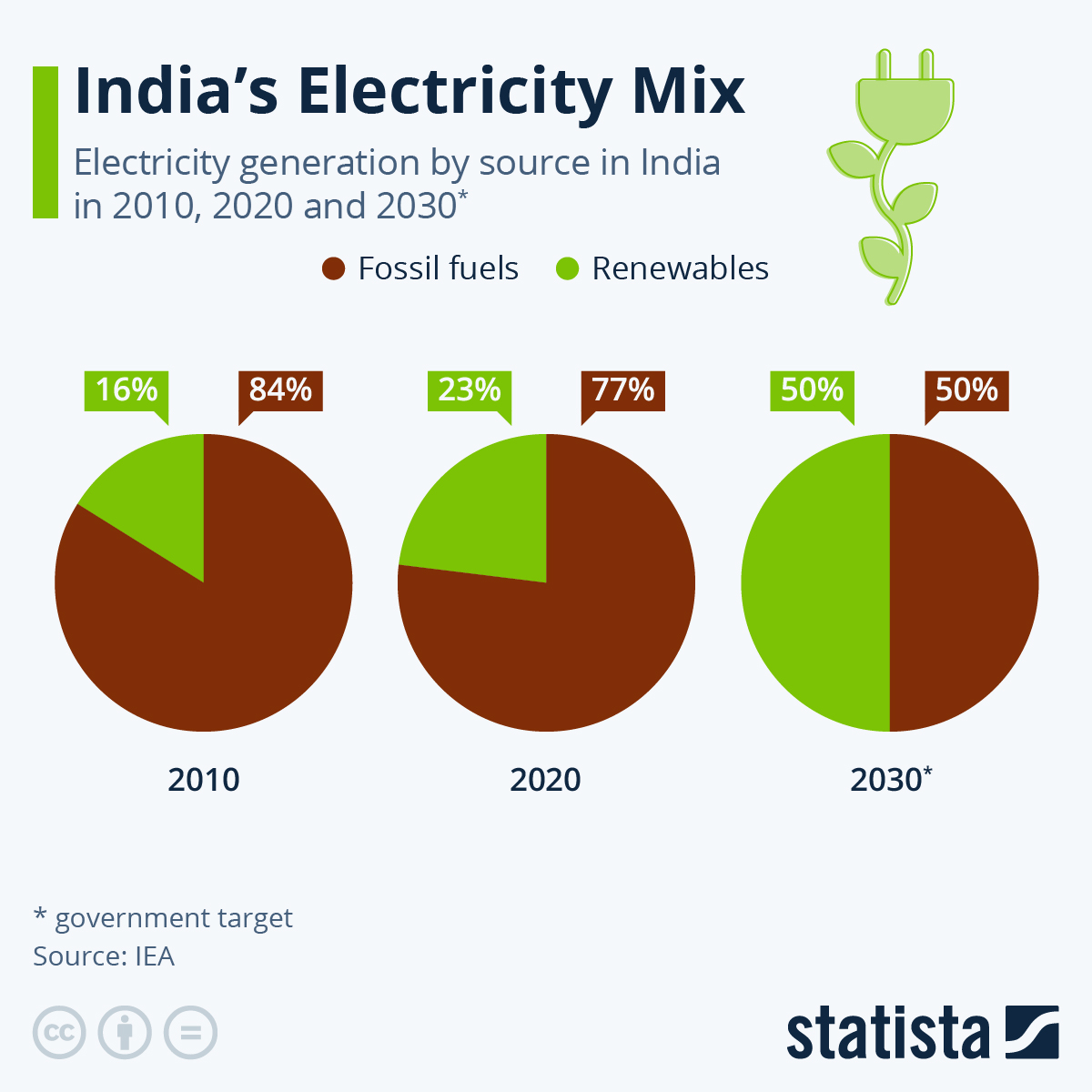India’s parliament is in the process of passing an energy conservation bill aimed at boosting the share of renewables in the country while also introducing a carbon trading scheme. The country in June had already set the target of generating half of its electricity from renewables by 2030. The bill mandates minimum requirements for renewables use for businesses and residential buildings and sets penalties if these are not met. The important lower chamber of India's parliament passed the bill in August and the upper house is expected to follow suit before the end of the year.
Data showing India’s electricity mix in the past decade shows how ambitious this goal really is. Between 2010 and 2020, India grew its share of renewable energy (including waste-burning and nuclear) from 16 percent to a 22 percent. A growth to 50 percent renewables in another ten years therefore requires the country's energy transformation to pick up a lot of speed.
In 2020, India used 77 percent fossil fuels for its electricity generation, of which 72.5 percent came from coal, 4.2 percent came from natural gas and 0.3 percent came from oil.
Considering India's overall energy demand, not just electricity, renewables and nuclear power only made up a share of 4 percent of the country's energy mix in 2020. The share of fossil fuels was also around three quarters of it, roughly the same as in electricity generation. Biofuels are used for the remaining 20 percent of India's energy need, the majority (13 percent) being traditional biofuels like the burning of wood and agricultural by-products. In order to meet its goal of becoming carbon-neutral by 2070, India is looking ahead to an equally demanding transition in sectors including household energy, industry and transportation.





















